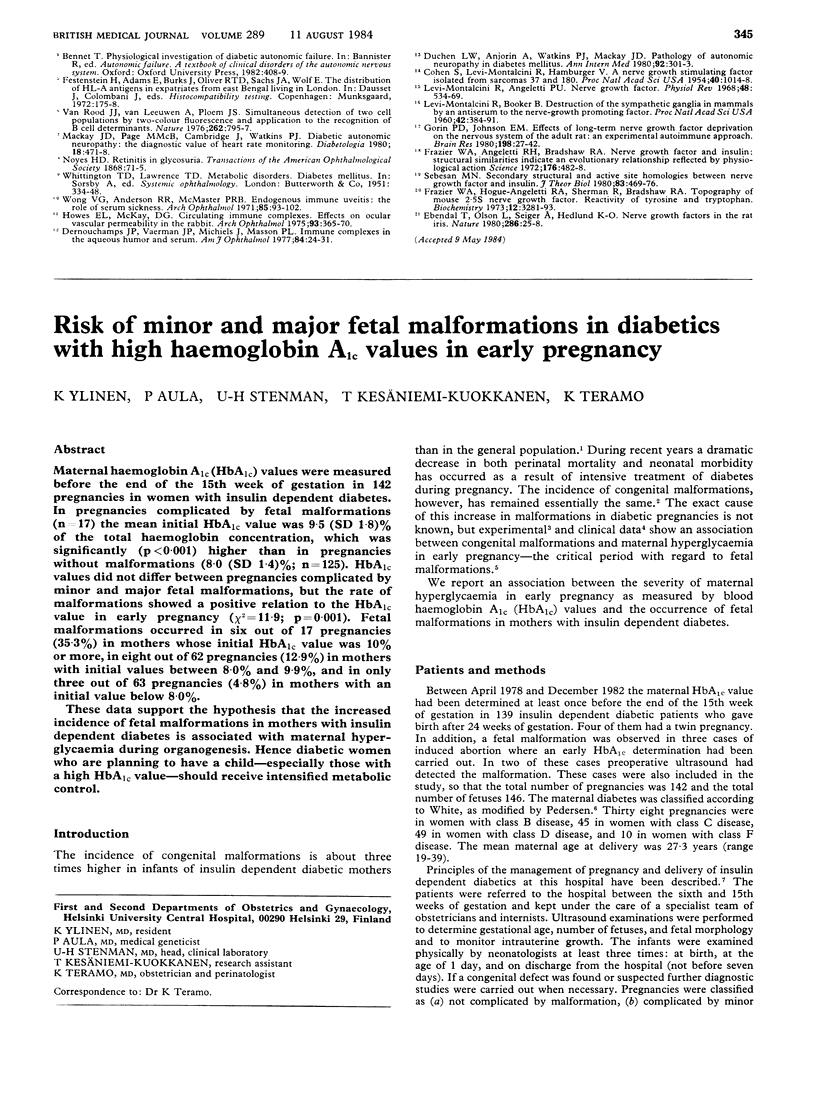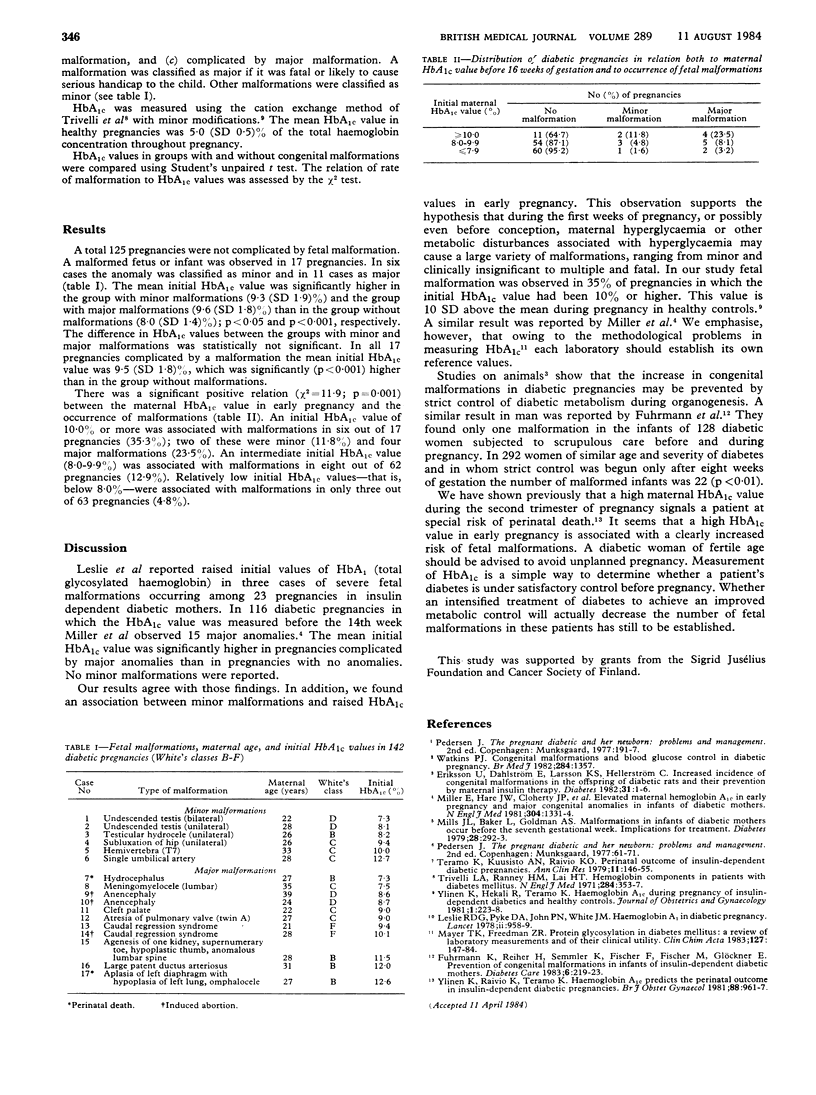Abstract
Maternal haemoglobin A1c (HbA1c) values were measured before the end of the 15th week of gestation in 142 pregnancies in women with insulin dependent diabetes. In pregnancies complicated by fetal malformations (n = 17) the mean initial HbA1c value was 9.5 (SD 1.8)% of the total haemoglobin concentration, which was significantly (p less than 0.001) higher than in pregnancies without malformations (8.0 (SD 1.4)%; n = 125). HbA1c values did not differ between pregnancies complicated by minor and major fetal malformations, but the rate of malformations showed a positive relation to the HbA1c value in early pregnancy (chi 2 = 11.9; p = 0.001). Fetal malformations occurred in six out of 17 pregnancies (35.3%) in mothers whose initial HbA1c value was 10% or more, in eight out of 62 pregnancies (12.9%) in mothers with initial values between 8.0% and 9.9%, and in only three out of 63 pregnancies (4.8%) in mothers with an initial value below 8.0%. These data support the hypothesis that the increased incidence of fetal malformations in mothers with insulin dependent diabetes is associated with maternal hyperglycaemia during organogenesis. Hence diabetic women who are planning to have a child--especially those with a high HbA1c value--should receive intensified metabolic control.
Full text
PDF

Selected References
These references are in PubMed. This may not be the complete list of references from this article.
- Eriksson U., Dahlström E., Larsson K. S., Hellerström C. Increased incidence of congenital malformations in the offspring of diabetic rats and their prevention by maternal insulin therapy. Diabetes. 1982 Jan;31(1):1–6. doi: 10.2337/diab.31.1.1. [DOI] [PubMed] [Google Scholar]
- Fuhrmann K., Reiher H., Semmler K., Fischer F., Fischer M., Glöckner E. Prevention of congenital malformations in infants of insulin-dependent diabetic mothers. Diabetes Care. 1983 May-Jun;6(3):219–223. doi: 10.2337/diacare.6.3.219. [DOI] [PubMed] [Google Scholar]
- Mayer T. K., Freedman Z. R. Protein glycosylation in diabetes mellitus: a review of laboratory measurements and of their clinical utility. Clin Chim Acta. 1983 Jan 24;127(2):147–184. doi: 10.1016/s0009-8981(83)80002-3. [DOI] [PubMed] [Google Scholar]
- Miller E., Hare J. W., Cloherty J. P., Dunn P. J., Gleason R. E., Soeldner J. S., Kitzmiller J. L. Elevated maternal hemoglobin A1c in early pregnancy and major congenital anomalies in infants of diabetic mothers. N Engl J Med. 1981 May 28;304(22):1331–1334. doi: 10.1056/NEJM198105283042204. [DOI] [PubMed] [Google Scholar]
- Mills J. L., Baker L., Goldman A. S. Malformations in infants of diabetic mothers occur before the seventh gestational week. Implications for treatment. Diabetes. 1979 Apr;28(4):292–293. doi: 10.2337/diab.28.4.292. [DOI] [PubMed] [Google Scholar]
- Teramo K., Kuusisto A. N., Raivio K. O. Perinatal outcome of insulin-dependent diabetic pregnancies. Ann Clin Res. 1979 Aug;11(4):146–155. [PubMed] [Google Scholar]
- Trivelli L. A., Ranney H. M., Lai H. T. Hemoglobin components in patients with diabetes mellitus. N Engl J Med. 1971 Feb 18;284(7):353–357. doi: 10.1056/NEJM197102182840703. [DOI] [PubMed] [Google Scholar]
- Watkins P. J. Congenital malformations and blood glucose control in diabetic pregnancy. Br Med J (Clin Res Ed) 1982 May 8;284(6326):1357–1358. doi: 10.1136/bmj.284.6326.1357. [DOI] [PMC free article] [PubMed] [Google Scholar]
- Ylinen K., Raivio K., Teramo K. Haemoglobin AIc predicts the perinatal outcome in insulin-dependent diabetic pregnancies. Br J Obstet Gynaecol. 1981 Oct;88(10):961–967. doi: 10.1111/j.1471-0528.1981.tb01681.x. [DOI] [PubMed] [Google Scholar]


